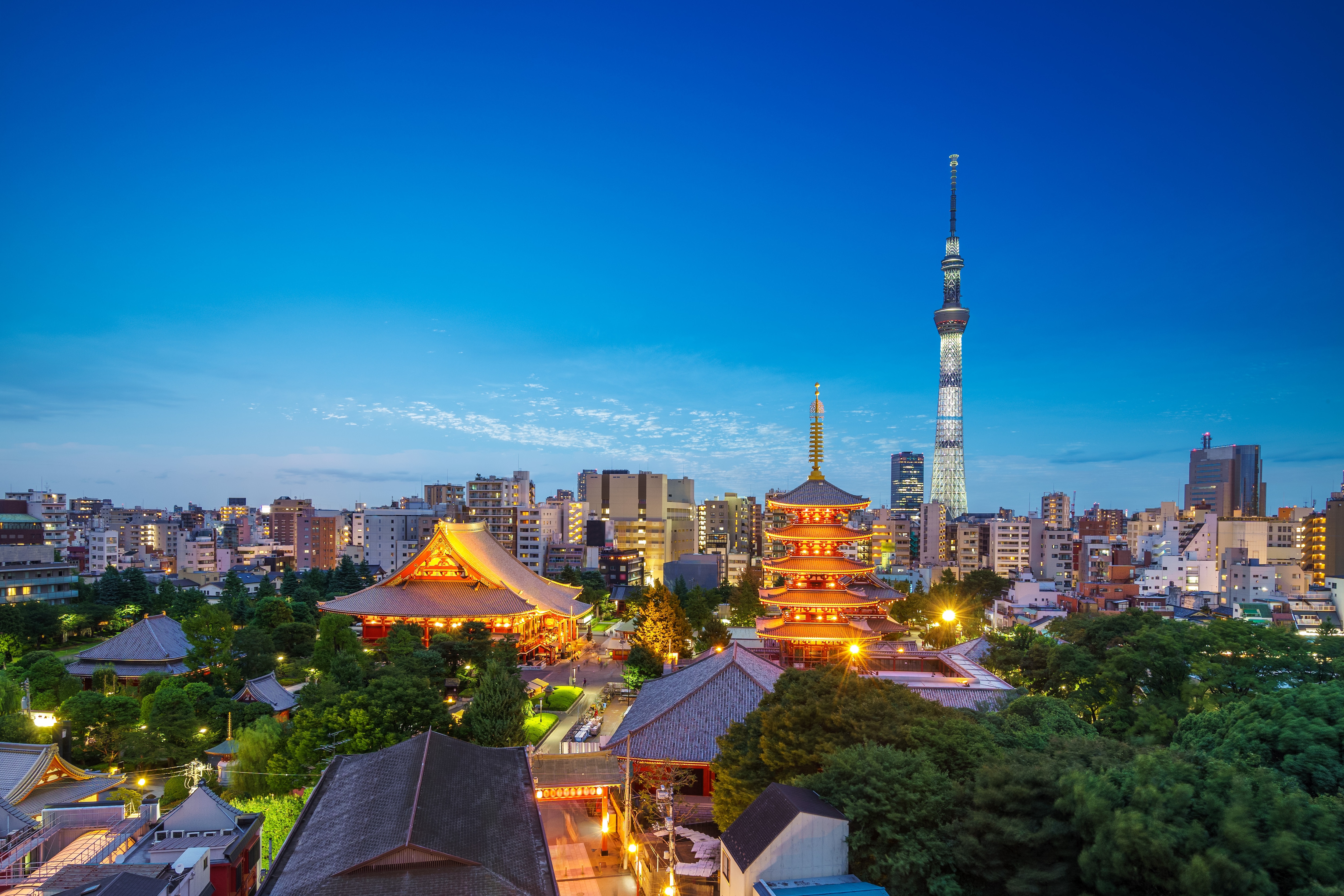
Tokyo (Yokohama), Japan
Description
Yokohama and Edo began life as sleepy fishing villages. That changed in the early 17th century after Tokugawa Ieyasu became Shogun. Edo became the center of political power in Japan, a position the city retained even after the restoration of Imperial rule in 1866.
Contemporary Tokyo may be the most astonishing city on earth. It's a paradoxical mix of ancient tradition and postmodern culture. The Ginza - an international shopping mecca - stands near the serene grounds of the Imperial Palace, and the hyper-speed of 21st century consumerism is mysteriously reconciled with the elegance and serenity of traditional culture. Tokyo provides the traveler with a dizzying experience.
With the Meiji Restoration of 1868, Edo was renamed Tokyo, the "Eastern Capital," to distinguish it from the old imperial capital at Kyoto, the "Western Capital."
Points of Interest
- Imperial Palace Plaza
- Meiji Shrine
- Sensoji Temple
- Tokyo Tower
- Great Buddha of Kamakura (Diabutsu)
- Hakone Ropeway-Owakudani-Lake Ashi
- Mount Fuji
- Sankeien Gardens
More about Tokyo (Yokohama), Japan Points of Interest
-
Imperial Palace Plaza -
The residence of Japan's Imperial Family boasts a large park area surrounded by moats and massive stone walls in the center of Tokyo.
-
Meiji Shrine -
Dedicated to the Emperor Meiji, the father of modern Japan, the Meiji Shrine stands in a dense forest glade at the very heart of Tokyo. Its setting symbolizes the separation of the spiritual from the worldly.
-
Sensoji Temple -
Sensoji was built to honor Kannon, the goddess of mercy in the early 7th century. Today, Sensoji Temple is Tokyo's oldest temple.
-
Tokyo Tower -
Taller than the Eiffel Tower by approximately 30 feet, Tokyo Tower is in the record books as Japan's 2nd highest self-supporting iron structure at 1,092 feet.
-
Great Buddha of Kamakura (Diabutsu) -
This monumental outdoor bronze statue of Amida Buddha is located at the Kôtoku-in Temple in Kamakura. According to temple records, it probably dates back to 1252 in the Kamakura period.
-
Hakone Ropeway-Owakudani-Lake Ashi -
Japan's famed Hakone National Park, a ropeway journey that promises such spectacular views as the crystal-clear waters of Lake Ashi and the volcanic fumes of Owakudani.
-
Mount Fuji -
Mount Fuji is the highest mountain in Japan at 12,389 feet, and one of Japan's "Three Holy Mountains." Its exceptionally symmetrical cone is a well-known symbol of Japan.
-
Sankeien Gardens -
Once the private gardens of a wealthy silk merchant, Sankeien Gardens features sculpted trees, lily ponds, graceful bridges and historic buildings collected from around Japan.